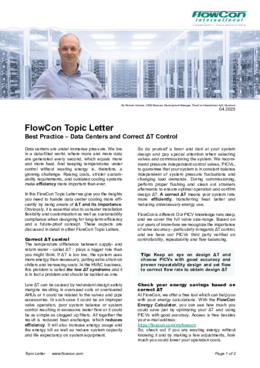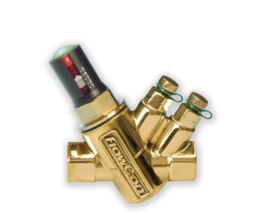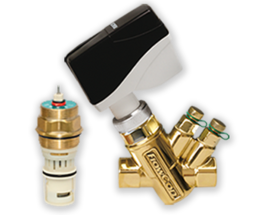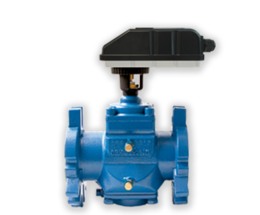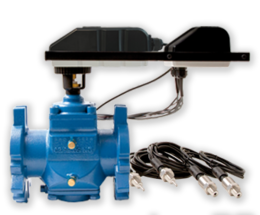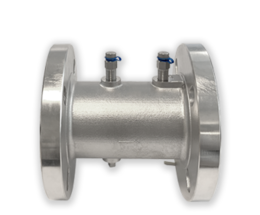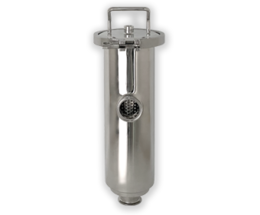Best Practice - Data Centers and Correct ΔT Control
By Nickolei Kroman, OEM Business Development Manager, FlowCon International ApS, Denmark - 04.2025
Data centers are under immense pressure. We live in a data-filled world, where more and more data are generated every second, which equals more and more heat. And keeping temperatures under control without wasting energy is, therefore, a growing challenge. Raising costs, stricter sustainability requirements, and outdated cooling systems make efficiency more important than ever.
In this FlowCon Topic Letter we give you the insights you need to handle data center cooling more efficiently by being aware of ΔT and its importance. Obviously, it is essential also to consider installation flexibility and customization as well as sustainability compliance when designing for long-term efficiency and a future-proof concept. These aspects are discussed in detail in other FlowCon Topic Letters.
Correct ΔT control
The temperature difference between supply- and return water - called ΔT - plays a bigger role than you might think. If ΔT is too low, the system uses more energy than necessary, putting extra strain on chillers and increasing costs. In the HVAC business, this problem is called the low ΔT syndrome and it is in fact a problem and should be tackled as one.
Low ΔT can be caused by redundant design safety margins resulting in oversized coils or overloaded AHUs or it could be related to the valves and pipe accessories. In such case it could be an improper valve operation, poor system balance or system control resulting in excessive water flow or it could be as simple as clogged up filters. All together the result is reduced heat exchange, which reduces efficiency. It will also increase energy usage and the energy bill as well as reduce system capacity and life expectancy on system equipment.
So do yourself a favor and look at your system design and pay special attention when selecting valves and commissioning the system. We recommend pressure independent control valves, PICVs, to guarantee that your system is in constant balance independent of system pressure fluctuations and changing load demands. During commissioning, perform proper flushing and clean out strainers afterwards to ensure optimal operation and confirm design ΔT. A correct ΔT means your system runs more efficiently, transferring heat better and reducing unnecessary energy use.
FlowCon is different. Our PICV knowledge runs deep, and we cover the full valve size-range. Based on our years of know-how we recognize the importance of valve accuracy - particularly in regards ΔT control, and we have our PICVs third party verified on controllability, repeatability and flow balancing.
Tip:
Keep an eye on design ΔT and choose PICVs with good accuracy and proven repeatability design and set flow to correct flow rate to obtain design ΔT.
Check your energy savings based on correct ΔT
At FlowCon, we offer a free tool which can help you with your energy calculations. With the FlowCon Energy Calculator, you can see how much you could save just by optimizing your ΔT and using PICVs with good accuracy. Access is free besides your e-mail address - go to → MyFlowCon
So, check out if you are wasting energy without knowing it and by making a few adjustments, how much you could lower your operation costs.
Download Article
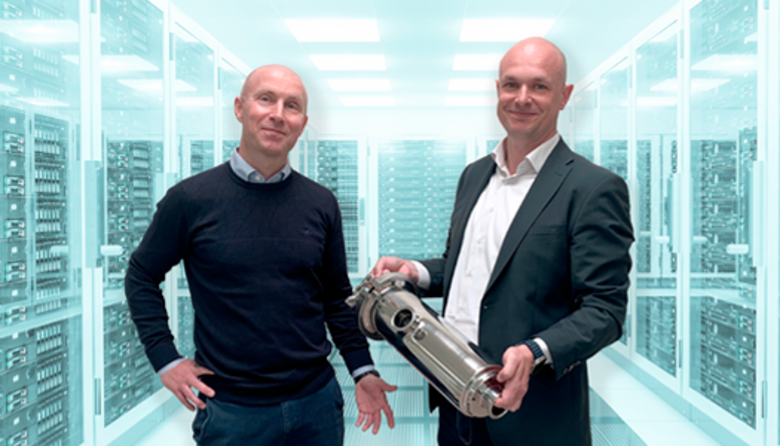
Need more information?
FlowCon wants to be your partner and not just another supplier to your data center business. We collaborate with our customers to develop solutions that meet their specific needs. Our focus is on advising, optimizing, and ensuring long-term efficiency, not just delivering products.
For expert guidance and insight, contact Mr. Nickolei Kroman, OEM Business Development Manager at FlowCon. With over nine years of experience in optimizing HVAC solutions, Nickolei can help you get the most out of your data center cooling system.
FlowCon PICV keeps Data Centers cool with less amount of Energy
FlowCon is the leading expert in HVAC solutions for data centers.
With our PICVs, we deliver precise, energy-efficient cooling that reduces costs, improves system stability, and supports long-term sustainability.
Unlike standard solutions, our valves are engineered to optimize performance in dynamic environments, which ensures reliable cooling with minimal energy waste.
